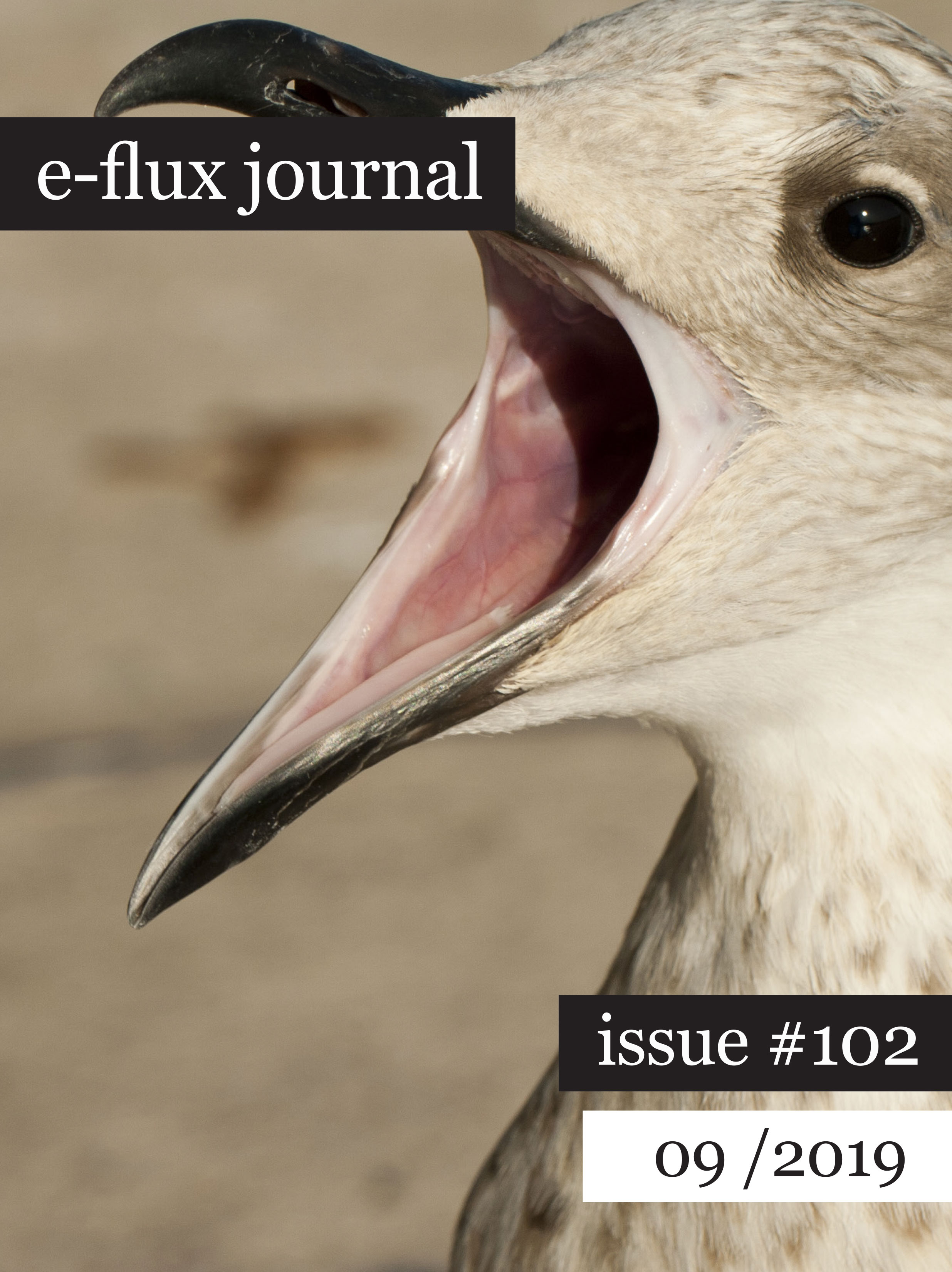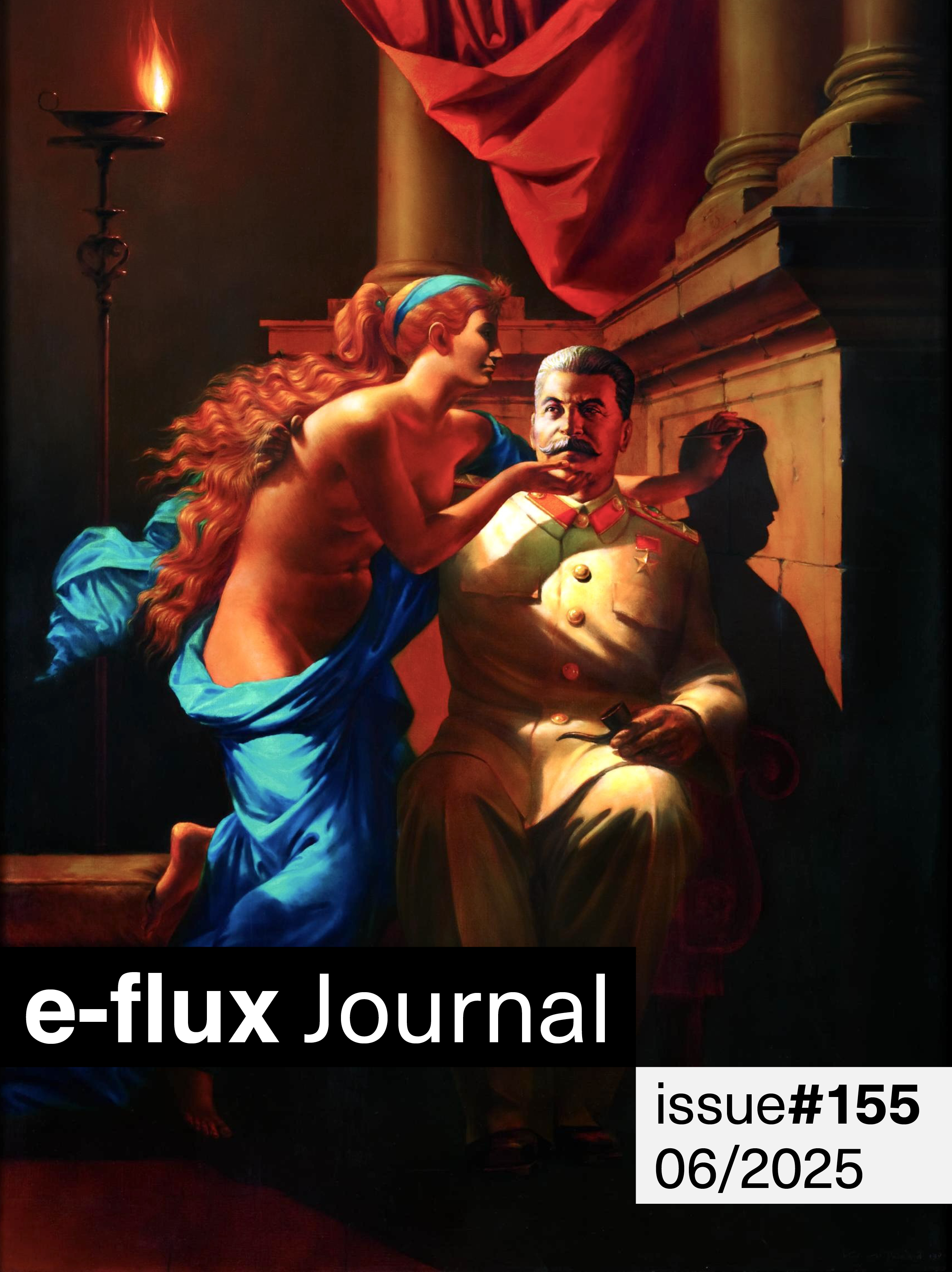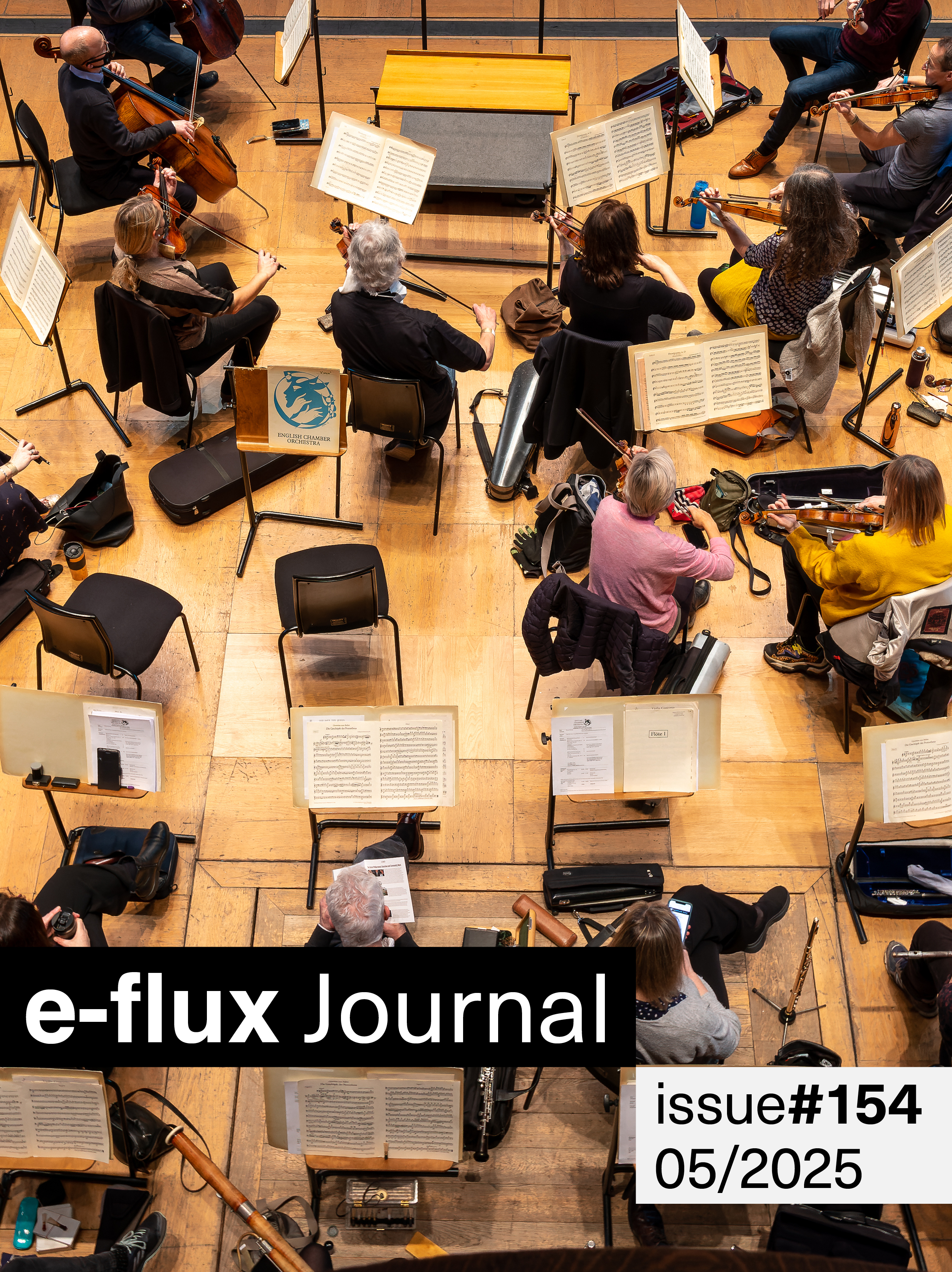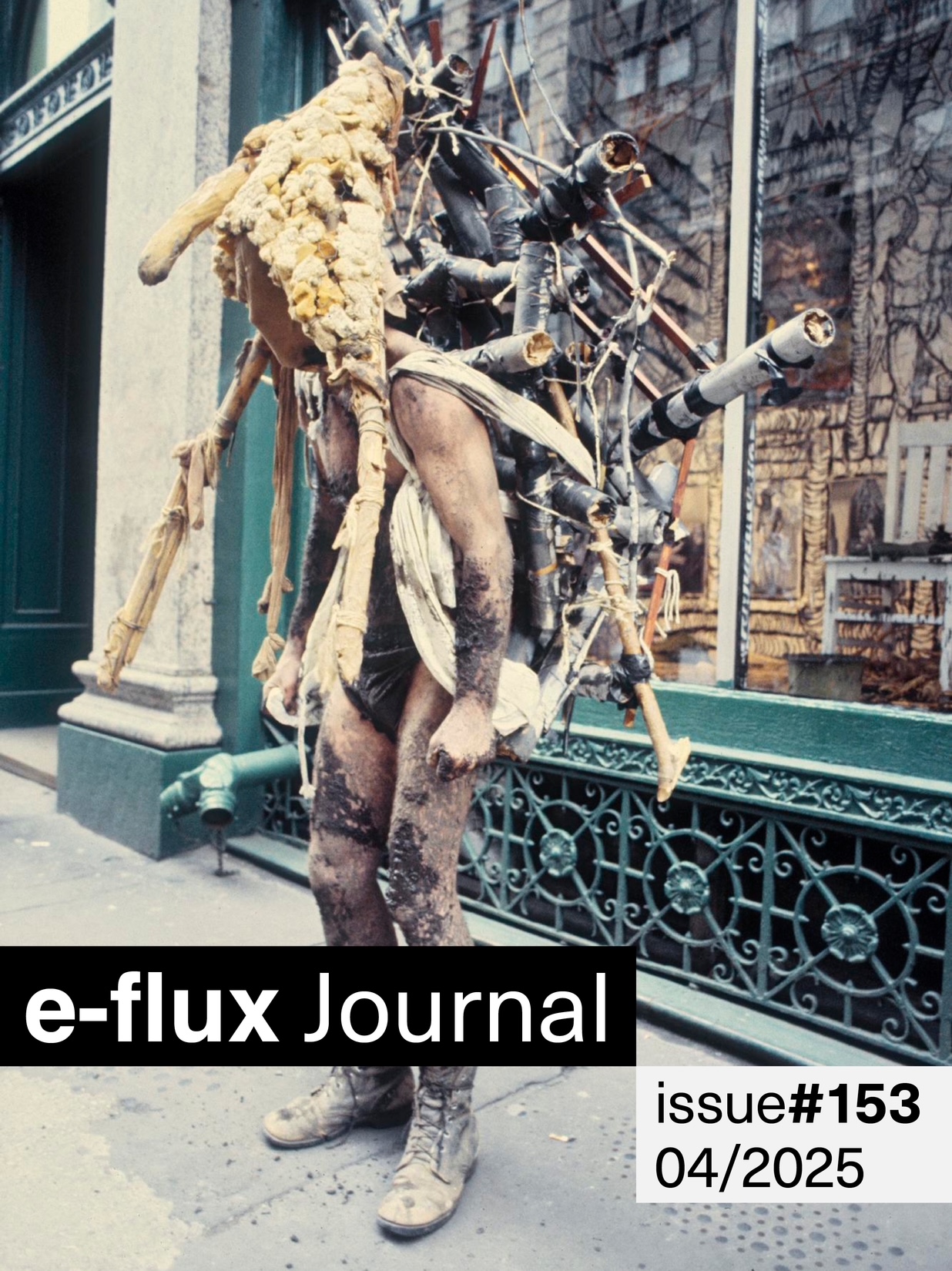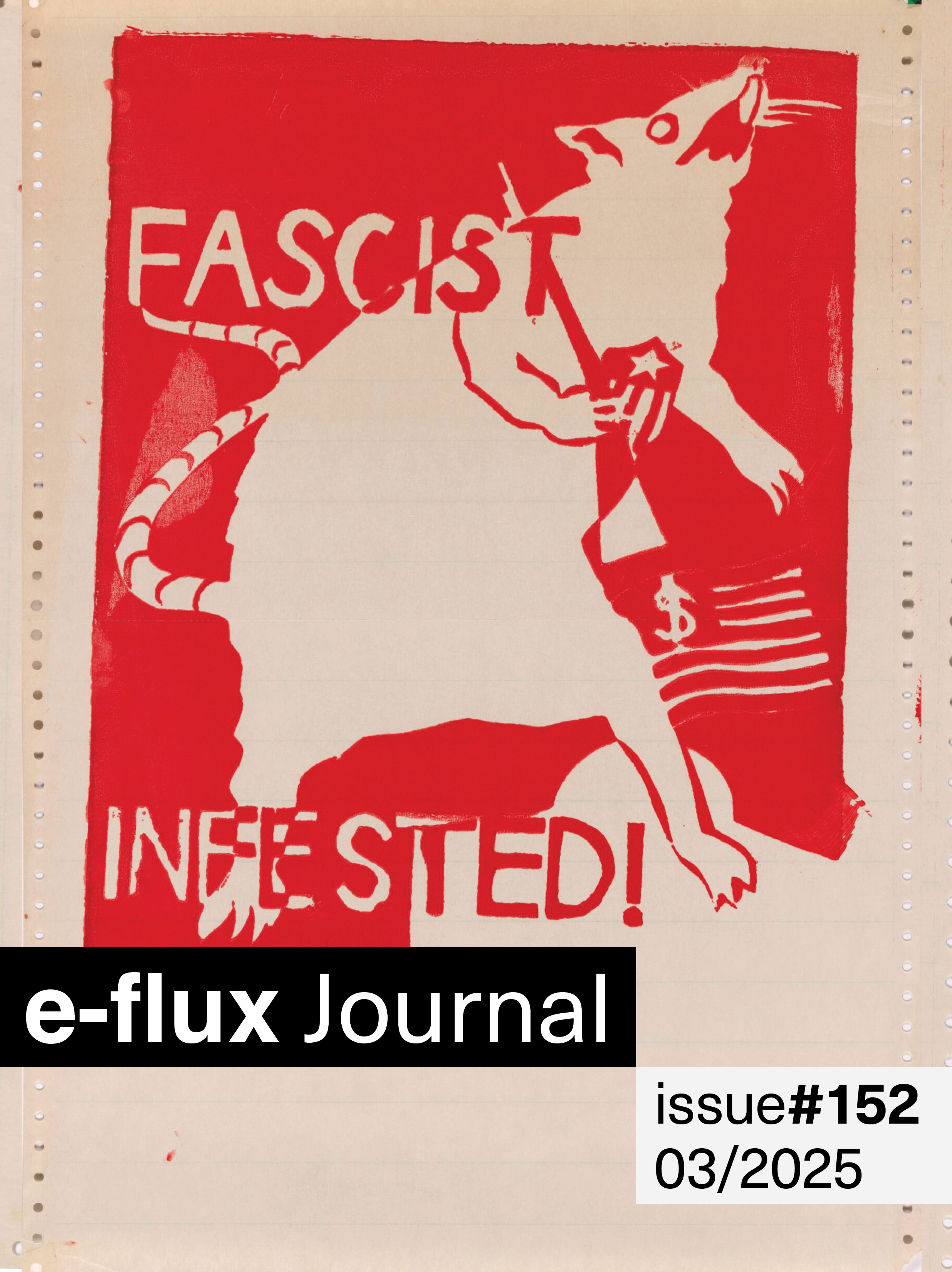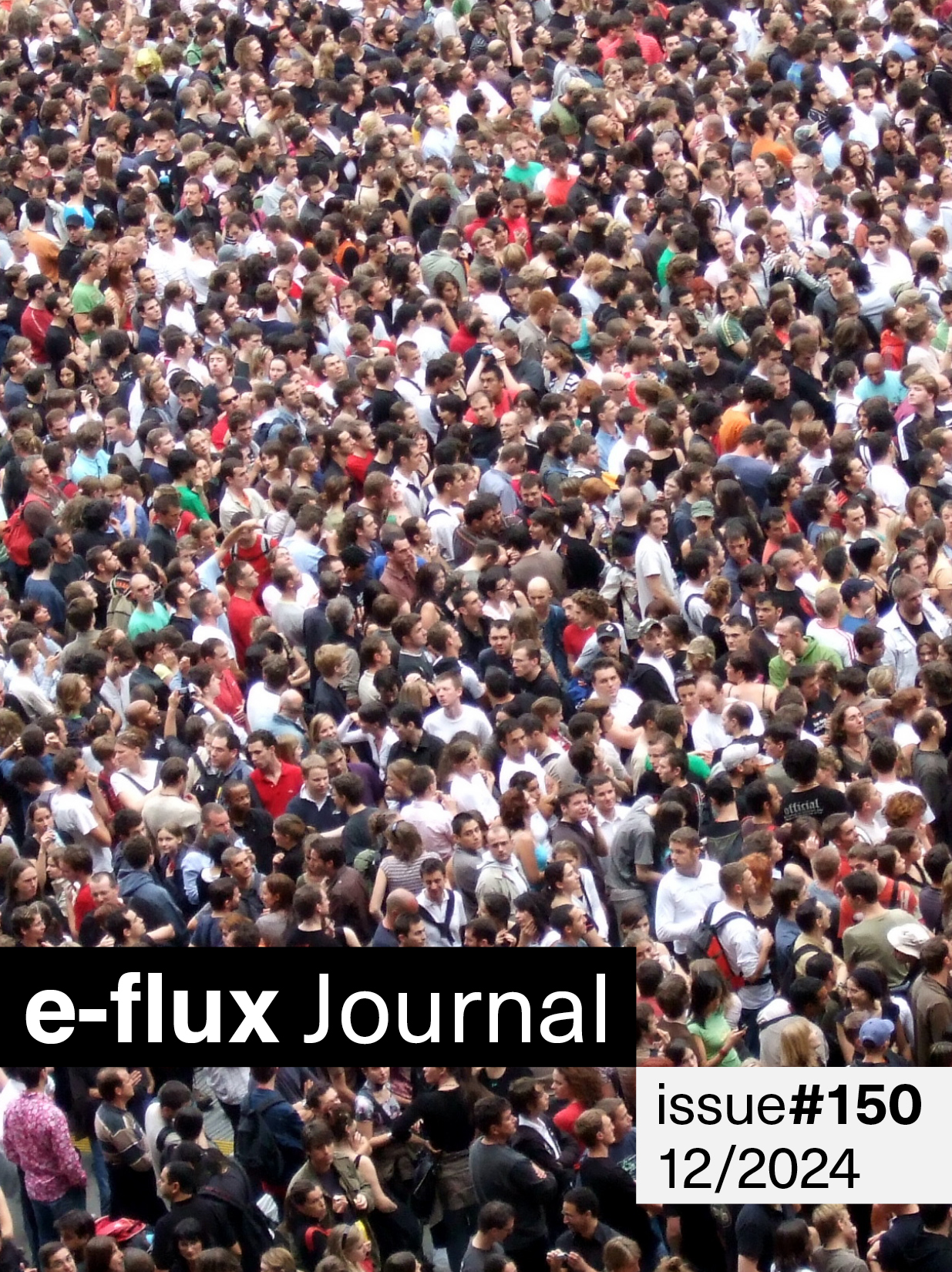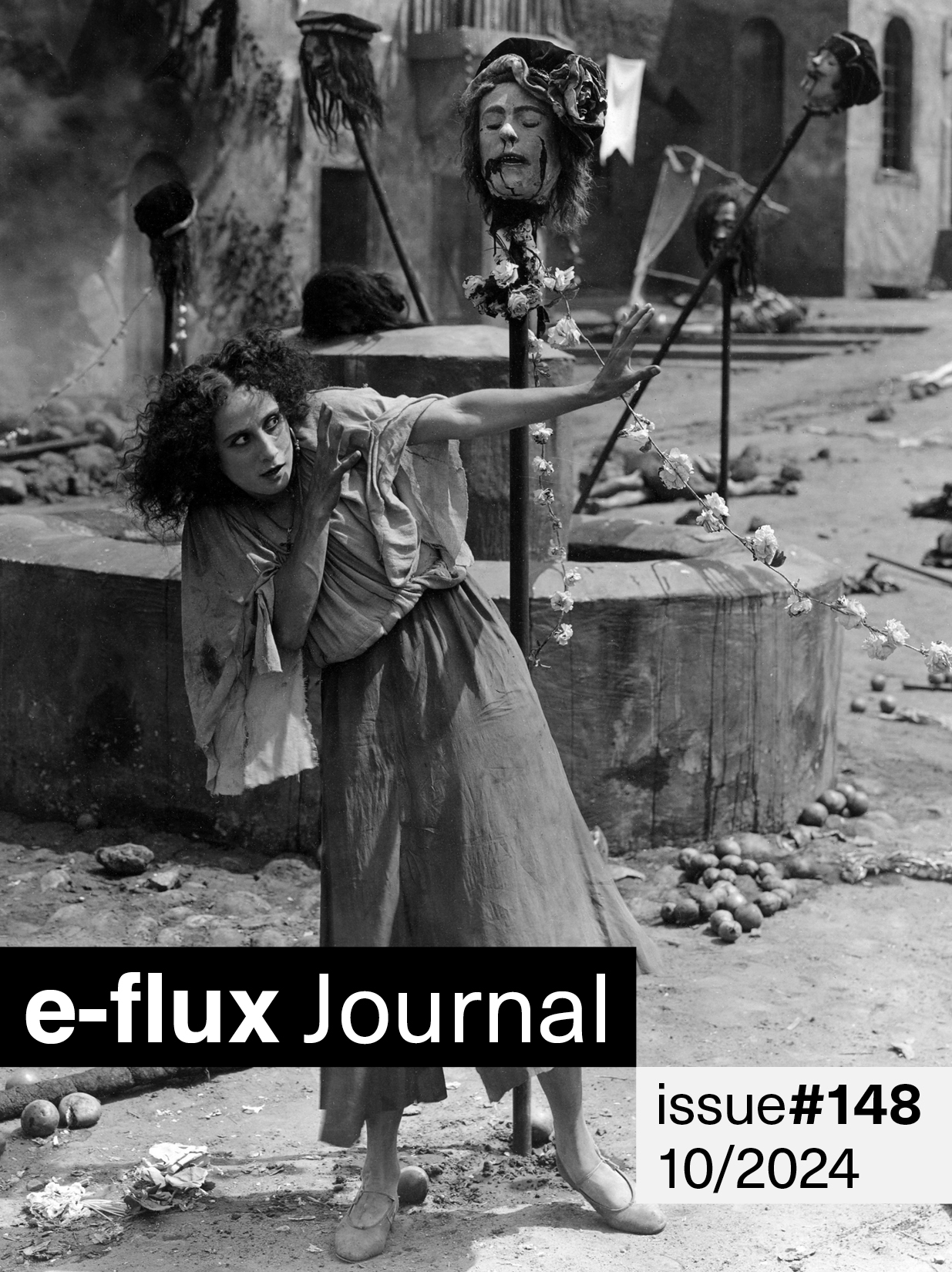e-flux journal issue 102
with Franco “Bifo” Berardi and Massimiliano Geraci, Jonas Staal, Teresa Castro, McKenzie Wark, Samer Frangie, Nika Dubrovsky and David Graeber, Claire Fontaine, and Geert Lovink and Yuk Hui
Federica showed up for her appointment with the person who had agreed to purchase her soul. Thus begins Franco “Bifo” Berardi and Massimiliano Geraci’s novel Morte ai Vecchi (Death to the old), in which a device called KapSoul delivers “waves of empathic excitement” to young people before they descend into orgiastic violence against the elderly. The first serial installment of the translated novel is published in this issue of e-flux journal, with further installments coming in the near future.
Also in this issue, Jonas Staal illuminates the Martian designs of Elon Musk and Jeff Bezos, with their unabashedly extractive colonial ambitions. But Staal also reminds us of radical visions, sketched by authors like Alexander Bogdanov and Octavia Butler, of deep nonhuman comradeship on the red planet.
Against the backdrop of the fires engulfing the Amazon rainforest, Teresa Castro outlines the importance of queer kinship with vegetal and other forms of life, which have much to teach us. Warning against anthropomorphizing the rainforest as “the lungs of the earth,” Castro reminds us that this is ultimately part of a colonizing view that frames “nature” as something we own—as something that works for us. Castro also traces the history of plants on film; this history reveals our limited imagination when it comes to vegetal life, but also includes magical moments of other-than-human autonomy and subjectivity.
Samer Frangie makes sense of his own generation in post–civil war Beirut, one that rushed into the future in the absence of a past, seeing itself as the product of a historical rupture. Frangie writes that Beirut’s late-nineties generation became the “vanguard by default.” Taught by the previous, prewar generation to distrust presentism, they had no time but the present, and no ground but the reconstructed one, on which to center themselves.
Claire Fontaine responds to this year’s Venice Biennale, where visitors are faced with an acute contradiction. Fontaine writes that the displaying of such a massive, incoherent volume of “experimental gestures” from all over the world drains the works of the very value that drew the curators—and maybe even the artists themselves—to them in the first place.
Nika Dubrovsky and David Graeber also use this year’s Venice Biennale as a springboard to detail how the art world has come to “operate simultaneously as a dream of liberation, and a structure of exclusion.” Can there be—or has there perhaps always been—another art world serving utopian ends? Dubrovsky and Graeber examine art’s paradoxical conceptions of value and its corresponding ability to either reproduce or potentially overturn the dominant social structure. According to Malevich, they remind us, artists were to be prophets and founders of a new communal world where everyone creates, free from political threats and from the possibility of their work being turned into clichéd commodities.
In McKenzie Wark’s exploration of prettiness as an aesthetic in trans art—especially in the recent film So Pretty by Jessie Jeffrey Dunn Rovinelli—she asks: If the utopian is to be more than a momentary illumination, how do we organize love? In “Femme as in Fuck You,” Wark explores the potential for a glimmer of utopia in the pretty, if it can be something with agency—something other than the traditional lasso for men’s desires. The pretty can be utopian to the extent that it keeps certain types of violence at bay. Wark also asks what a utopian cinema might look like, and whether So Pretty falls into this category.
Ways and categories of thinking, as Yuk Hui urges in his interview with Geert Lovink, must also be reorganized in the face of current existential threats and emergent technologies. Academic disciplines need to speak to one another, insists Hui, while also admitting that the chasms between them can’t be mended, “since when you attempt to bridge a gap, this gap is at the same time maintained.” Hui offers a different possibility: “to create a new discipline in which this gap no longer exists.”
—Editors
Franco “Bifo” Berardi and Massimiliano Geraci—Killing Swarm
But a bird in flight has no idea of the shape of its flock. The idea of a flock emerges from creatures that are completely unaware of their collective form, of its size and formation. A bird that joins a flock is blind to the grace and cohesiveness of the geometries of flight. After their flash action, those kids return to their daily activities. They do their homework and curl up in front of the TV to watch a reality show. The brain of a bee can remember things for six days, but the beehive as a whole has a memory of three months, which is twice the average life span of a bee. Ah, I forgot—producing a single spoonful of honey takes the entire life span of twelve bees. Think of that the next time you spread honey on a piece of toast. Think of it, my friend.
Jonas Staal—Comrades in Deep Future
The word “propaganda” originates from biology, literally referring to the reproduction and duplication—the propagation—of plants and animals. In this time of catastrophe on earth and corporate and nationalist schemes to export that very same catastrophe to other living worlds, Haraway’s rethinking of propaganda offers a precondition for collective survival and the perseverance of new socialist forms of living. Neo-constructivist, cosmist, and assemblist training camps and biospheres: these are the terms for a morphological vocabulary of a hyperempathic propaganda art that makes living worlds of comradeship in deep past, deep present, and deep future imaginable and realizable.
Teresa Castro—The Mediated Plant
The mediated, sentient, and intelligent plant potentially invites us to think about nature, plants, technology, and ourselves-as-humans in different ways. As plants in particular are revealed as agentic, intentional beings, the mediated plant potentially invites us to develop more caring, attentive, and communicative attitudes toward the vegetal. In this way, the mediated plant can push us forward in the urgent “struggle to think differently” that Val Plumwood called us to join. Perhaps the mediated, sentient, intelligent plant can help us to queer nature, to queer botanics, to queer ourselves-as-humans as we “go onwards in a different mode of humanity.” But why to queer? Why not “simply” to “decolonize”?
McKenzie Wark—Femme as in Fuck You
The word “pretty” is pretty trans. The sense of the pretty as duplicitous connects to a particularly hostile attitude to trans women: that we are traps. That our pretty faces and bodies might hide dick. (The full Freudian catastrophe.) But what if this sense of the pretty was reversible? Perhaps what is pretty is not trying to hide anything. Perhaps what is pretty is instead displacing this whole idea of appearances as a cover for some essence. Perhaps what is pretty need not be seen as hiding something, as damaged goods, but as a gift, as offering the possibility of stepping outside of exchange value.
Samer Frangie—The Little White Dog and the Postwar Promise
It may be a cliché to say that the past, from the perspective of the present, looks like a field of ruins for the historian to excavate. But our past, then, was literally a field of ruins, not for excavation, but for reconstruction and pillaging. We emerged from the civil war into a violent reconstruction process, governed by a postwar settlement that was characterized by “state-sponsored amnesia,” and a genuine desire to forget past horrors. We rushed into the future because we had no past, at least no past that could provide us with a sense of belonging, meaning, or continuity with what had come before. We were the product of a rupture, and we became the vanguard by default.
Nika Dubrovsky and David Graeber—Another Art World, Part I: Art Communism and Artificial Scarcity
We would like to offer some initial thoughts on exactly how the art world can operate simultaneously as a dream of liberation, and a structure of exclusion; how its guiding principle is both that everyone should really be an artist, and that this is absolutely and irrevocably not the case. The art world is still founded on Romantic principles; these have never gone away; but the Romantic legacy contains two notions, one, a kind of democratic notion of genius as an essential aspect of any human being, even if it can only be realized in some collective way, and another, that those things that really matter are always the product of some individual heroic genius. The art world, essentially, dangles the ghost of one so as to ultimately, aggressively, insist on the other.
Claire Fontaine—The Visitor as a Commercial Partner: Notes on the 58th Venice Biennale
The times we are living in are indeed “interesting,” as the title of this edition of the Biennale states: they resonate with a city awaiting the verdict of the forty-third session of the World Heritage Committee, which will likely add Venice to its List of World Heritage in Danger. Venice’s livelihood comes precisely from what is killing it (biennials included): if tourism were regulated, the economic survival of the city would be at risk; at the same time, if it continues to impact the environment of Venice the way it does now, the jewel of the lagoon will soon be destroyed. There are other structural problems related to the ethics of giant exhibitions: accumulation, we all confusedly feel, is damaging for art in general and contemporary art in particular. The implicit equivalence that is made when such large amounts of artworks are simultaneously displayed by private and public institutions on the same limited territory is frightening.
Geert Lovink—Cybernetics for the Twenty-First Century: An Interview with Philosopher Yuk Hui
YH: We live in an age of neo-mechanism, in which technical objects are becoming organic. Towards the end of the eighteenth century, Kant wanted to give a new life to philosophy in the wake of mechanism, so he set up a new condition of philosophizing, namely the organic. Being mechanistic doesn’t necessarily mean being related to machines; rather, it refers to machines that are built on linear causality, for example clocks, or thermodynamic machines like the steam engine. Our computers, smartphones, and domestic robots are no longer mechanical but are rather becoming organic. I propose this as a new condition of philosophizing. Philosophy has to painfully break away from the self-contentment of organicity, and open up new realms of thinking.
